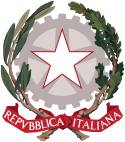
Back Referendum abrogativi in Italia del 2009 Italian Referendo sobre a lei eleitoral na Itália em 2009 Portuguese
| Part of the Politics series |
 |
|---|
|
|
Three abrogative referendums on the electoral law were held in Italy on 21–22 June 2009. They were promoted by Mario Segni, Giovanni Guzzetta, Arturo Parisi, Antonio Martino and Daniele Capezzone. With a turnout of 23.31% / 23.84%, the referendums did not reach the necessary quorum of 50% voters, so were not valid.[1]
The three questions[2] were about giving the majority prize to the most voted list in the Chamber of Deputies (question 1, purple ballot) and in the Senate (question 2, yellow ballot) as opposed to the most voted coalition, as is the current law, and about preventing politicians from standing in multiple constituencies at the same time (question 3, green ballot).[3]
The Promoting Committee and Democratic Party (PD) had proposed holding the referendums together with European Parliament elections, whereas The People of Freedom (PdL) as its main ally, the Lega Nord, opposed the referendums and answered that never, in Italian history, an election and a referendum were jointly celebrated.
Several PdL party officials had long supported the referendums, the main long-term goal of the PdL being to transform Italian politics into a two-party system. The PD saw the referendums as an opportunity to overcome its current political hard times and to divide the centre-right.[4][5][6]
- ^ Cite error: The named reference
resultswas invoked but never defined (see the help page). - ^ "Cosa prevedono i 3 quesiti referendari". Il Sole 24 Ore (in Italian). 2009-04-11. Retrieved 2009-06-23.
- ^ (in Italian)I subentri nelle assemblee parlamentari in corso di legislatura, in Quaderni costituzionali / a. XXVII, n. 4, dicembre 2007, p. 909.
- ^ "Mercoledì 15 Aprile Presidio permanente con Guzzetta e Segni per chiedere l'abbinamento con l'Election Day" (in Italian). Referendums Committee press release. 2009-04-15. Archived from the original on 2009-04-18. Retrieved 2009-06-23.
- ^ "Referendum ed election day Il Carroccio fa muro". Corriere della Sera (in Italian). 2009-04-12.
- ^ "Election day il Pd insiste La Lega: impossibile". Corriere della Sera (in Italian). 2009-04-14.